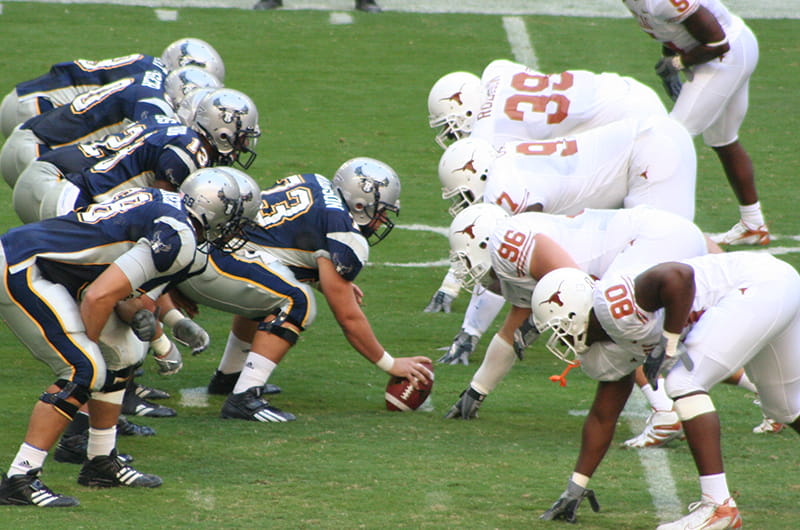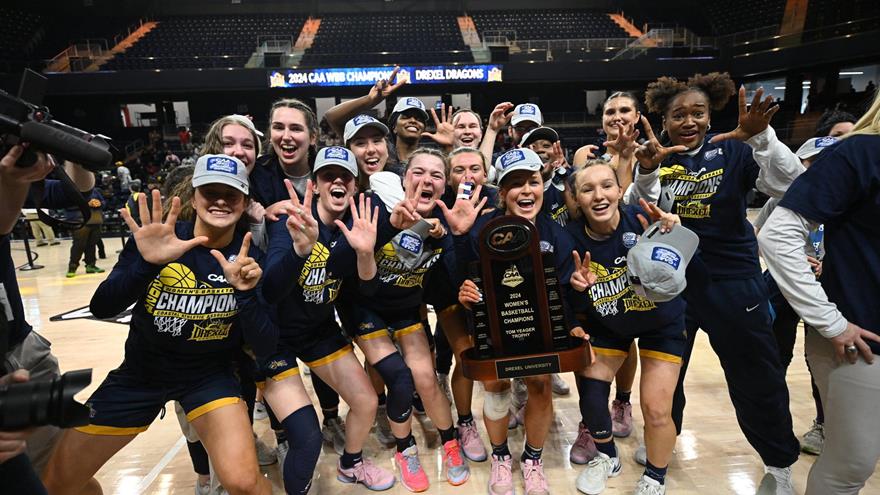What Does the Northwestern Football Ruling Mean for College Sports? A Q&A With Ellen Staurowsky

Late last month, the National Labor Relations Board (NLRB) announced its landmark ruling that Northwestern University football players should be considered school employees – not students – and that those players had the right to form unions. Northwestern University believes that student-athletes are students first and plans to appeal the ruling.
DrexelNow reached out to Ellen Staurowsky, EdD, to find out what will happen next and how this ruling could change the landscape of college athletics. Staurowsky is a sport management professor in Drexel’s Center for Hospitality and Sport Management and is internationally recognized as an expert on social-justice issues in sports. She is co-author of the book "College Athletes for Hire: The Evolution and Legacy of the NCAA Amateur Myth."
What are the next steps?
Northwestern University is appealing the NLRB Regional Office’s ruling that football players there are employees under common law that defines an employee as “a person who performs services for another under contract of hire, subject to the other’s control or right of control and in return for payment.” There may be more litigation to follow, with the possibility that the case could go to the U.S. Supreme Court. While this ruling applies only to Northwestern, it has implications for other private colleges and universities. The ruling does not have a direct impact on football programs offered at public institutions; however, players at those institutions could seek similar remedies under state labor laws.
Critics argue that athletes are fairly compensated through the scholarships they receive. Is this about more than just players getting paid?
The NLRB ruling acknowledges that athletic scholarships are offered to Northwestern football players in return for the work they do as athletes. Other factors included the fact that the 40-50 hours per week they spent on football constituted a work week and that coaches had substantial control over the players’ lives. Players are prohibited from profiting off of their names and likenesses but are obligated by Northwestern and the Big Ten Conference to sign a release that gives those entities, along with the NCAA, permission to do so.
The issue isn’t whether athletes should be paid. They have been, as long as athletic scholarships have been in existence. The issue is about fair compensation, appropriate health care and medical protections and opportunities to contest rules previously imposed without their input.
Based on the studies you’ve conducted with the National College Players Association, do you believe that college athletes are being exploited?
Under a fair market analysis, the value of college football and men’s basketball players is suppressed as a result of NCAA rules limiting compensation. For the 2011-2012 academic year, the average full athletic scholarship for a player in an Football Bowl Subdivision institution was worth approximately $23,204. In contrast, the annual fair market value for athletes in the big-time sports of football and men’s basketball were, respectively, estimated to be $137,357 and $289,031, based on what their value would be if revenue-sharing models similar to those used in the NFL and NBA were applied to college sport.
Coaches’ salaries reveal the dimensions of the inequities that exist. If the University of Kentucky men’s basketball team wins the 2014 NCAA Men’s Basketball Tournament, head coach John Calipari stands to receive a total of $600,000 in bonuses for tournament performance, adding to a base compensation of $5.2 million. But player compensation is narrowly restricted to room, board and tuition.
Does this mean that, under Title IX, female athletes would be required to get paid an “equitable percentage” earned from television revenue?
Some argue that this ruling will require that whatever happens with these athletes will warrant a similar response in terms of woman athletes. This may not necessarily be so. Title IX addresses issues related to educational access and for college athletes in educationally based programs.
What this case highlights is the fact that there are multiple college sport systems that are in operation. One is a highly commercialized and professionalized multibillion-dollar industry. The other is educationally based. It is important to understand these distinctions when considering the implications of Title IX.
Too often, the rights of workers in the college sport system are represented as being oppositional to the fulfillment of Title IX. In a New York Times editorial last week, I cautioned against the tendency to pit the rights of workers in the highly commercialized college sport entertainment industry against the civil rights of college athletes in an educational sport system.
Will this case fundamentally change the system as we know it?
Genuine change is always difficult and, when it happens, it often feels like the world is coming to an end. Reflecting back, there were those who feared in the 1950s and 1960s that television would be the ruination of college football. That did not happen. In the 1970s, there were predictions that Title IX would kill college football as it was known. Since 1973, college football has never been more lucrative or powerful. If history is any indication, college sport will adapt and will likely prosper. It just may look different from how it looks today.In This Article
Drexel News is produced by
University Marketing and Communications.
